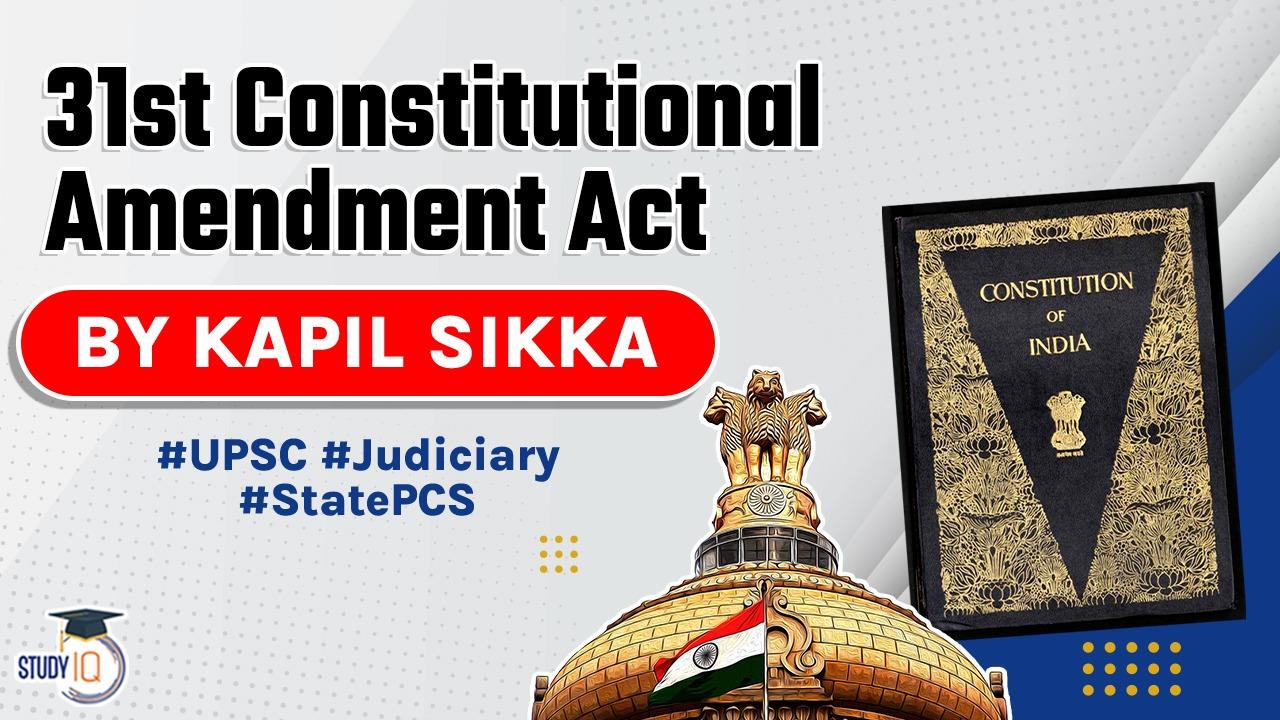Table of Contents
31st Amendment 1973
STATEMENT OF OBJECTS AND REASONS
- Clause (1) of article 81 of the Constitution provides that the House of the People shall consist of not more than 500 members to be chosen by direct election from territorial constituencies in the States and not more than 25 members to represent the Union territories, chosen in such manner as Parliament may by law provide.
- As a result of the enactment of the North-Eastern Areas (Reorganisation) Act, 1971 (81 of 1971), the total number of seats in the Lok Sabha allotted to the States has increased to 506, six more than the permissible limit of 500 under article 81.
- The actual total number of elected members of the present Lok Sabha is 522 (489 from the fifteen major States, 17 from the six smaller States of Himanchal Pradesh, Jammu and Kashmir, Manipur, Meghalaya, Nagaland and Tripura each of which has a population of less than six millions and 16 from the nine Union territories).
- Clause (2) of article 81 of the Constitution lays down that for the purposes of sub-clause (a) of clause (1), there shall be allotted to each State a number of seats in the House of the People in such manner that the ratio between that number and the population of the State is, so far as practicable, the same for all States and that each State shall be divided into territorial constituencies in such manner that the ratio between the population of each constituency and the number of seats allotted to it is, so far as practicable, the same throughout the State.
- Under clause (3) of article 81, the expression “population” means the population as ascertained in the last preceding census of which the relevant figures have been published.
- Article 82 enjoins that on the completion of each census, the allocation of seats in the House of the People to the State and the division of each State into territorial constituencies shall be readjusted by such authority and in such manner as Parliament may by law determine.
- Article 330 of the Constitution relates to reservation of seats in the Lok Sabha for Scheduled Castes and Scheduled Tribes.
- The provisons of this article have, however, been made inapplicable to the State of Nagaland on the ground that it has a predominantly tribal population. According to the 1971-census, 88.6 per cent. of Nagaland’s population belong to the Scheduled Tribes.
- The corresponding figures for the State of Meghalaya and the Union territories of Arunachal Pradesh and Mizoram are 80.5 per cent., 79.0 per cent. and 94.3 per cent. respectively.
- Government, therefore, consider that the provisions of article 330 should not apply also to the predominantly tribal units of Meghalaya, Arunachal Pradesh and Mizoram.
- Similarly, it is considered that as in the case of Nagaland, there need be no reservation of seats for Scheduled Tribes in the Legislative Assembly of the State of Meghalaya and the article 332 of the Constitution may be amended suitably
- Amendment of article 81.-In article 81 of the Constitution,-(a) in clause (1),-(i) in sub-clause (a), for the words “five hundred members”, the words “five hundred and twenty-five members” shall be substituted; and(ii) in sub-clause (b), for the words “twenty-five members”, the words “twenty members” shall be substituted;
- Amendment of article 330.-(1) In article 330 of the Constitution,-(a) in sub-clause (b) of clause (1), for the words “except the Scheduled Tribes in the tribal areas of Assam and in Nagaland, and”, the following shall be substituted, namely:-“except the Scheduled Tribes-(i) in the tribal areas of Assam;(ii) in Nagaland;(iii) in Meghalaya;(iv) in Arunachal Pradesh; and(v) in Mizoram






















 WhatsApp
WhatsApp